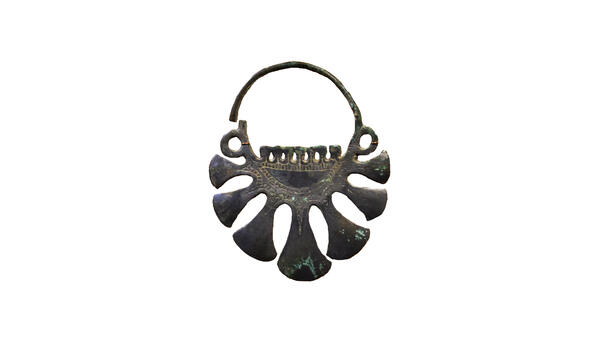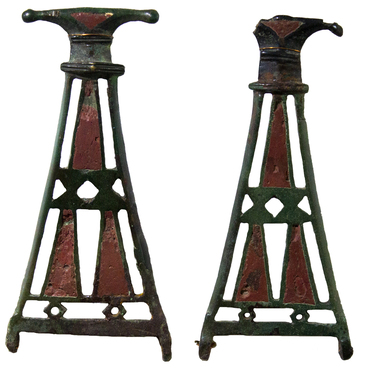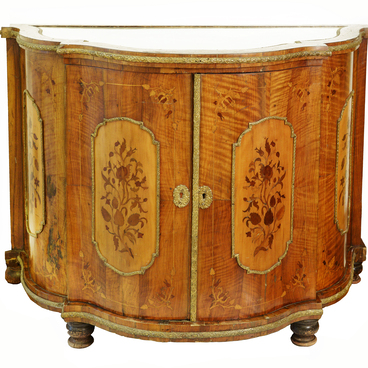One of the most popular pieces of jewelry among Slavic women were temple rings. Women hung them on ribbons or thin straps at the temples; sometimes rings were woven into the hair or sewn to headdresses: a crown or a povoinik (the so-called linen cap worn by married women).
Different tribes created temple rings in different ways. For example, the decorations of the Vyatichi tribe resembled the shape of an inverted rooster’s comb or the rising sun. And the northerners preferred simple wire spiral rings. The women wore two or four rings on each side.
Archaeologists discovered the first temple rings on the territory of Eastern Europe. Those were small bronze spirals dating from the 3rd-4th millennia BC. By the 8th–9th centuries AD, these ornaments became very popular among the West Slavic tribes, and over time, the fashion for temple rings spread among the Eastern Slavs.
Researchers believe that temple rings were the prototype of earrings. There is an assumption that these ornaments were called “useryaz”” by the Slavs, which can be approximately translated into modern Russian as “ear decoration”.
Temple rings are divided into three groups: wire, bead, and lobed. The first was woven from thin wire, sometimes in the form of a simple ring. To make bead rings, beads were strung on wires. And the lobed rings were cast ornaments consisting of a semicircular bow and a shaped plate. Such a ring is displayed at the exposition of the Oryol Museum of Local History.
The simplest temple rings were made of bronze; the more expensive ones were made of silver and gold. Only wealthy families could afford them. Both girls and married women wore rings. Little girls and teenage girls who were not yet brides either did not wear such jewelry at all or chose the simplest, wire ones. Girls and young women wore especially rich and elegant jewelry. Rings were also of ritual nature — they protected their owner from evil forces. With age, women gradually abandoned the ornate rings, passing them on to their daughters.
Different tribes created temple rings in different ways. For example, the decorations of the Vyatichi tribe resembled the shape of an inverted rooster’s comb or the rising sun. And the northerners preferred simple wire spiral rings. The women wore two or four rings on each side.
Archaeologists discovered the first temple rings on the territory of Eastern Europe. Those were small bronze spirals dating from the 3rd-4th millennia BC. By the 8th–9th centuries AD, these ornaments became very popular among the West Slavic tribes, and over time, the fashion for temple rings spread among the Eastern Slavs.
Researchers believe that temple rings were the prototype of earrings. There is an assumption that these ornaments were called “useryaz”” by the Slavs, which can be approximately translated into modern Russian as “ear decoration”.
Temple rings are divided into three groups: wire, bead, and lobed. The first was woven from thin wire, sometimes in the form of a simple ring. To make bead rings, beads were strung on wires. And the lobed rings were cast ornaments consisting of a semicircular bow and a shaped plate. Such a ring is displayed at the exposition of the Oryol Museum of Local History.
The simplest temple rings were made of bronze; the more expensive ones were made of silver and gold. Only wealthy families could afford them. Both girls and married women wore rings. Little girls and teenage girls who were not yet brides either did not wear such jewelry at all or chose the simplest, wire ones. Girls and young women wore especially rich and elegant jewelry. Rings were also of ritual nature — they protected their owner from evil forces. With age, women gradually abandoned the ornate rings, passing them on to their daughters.



